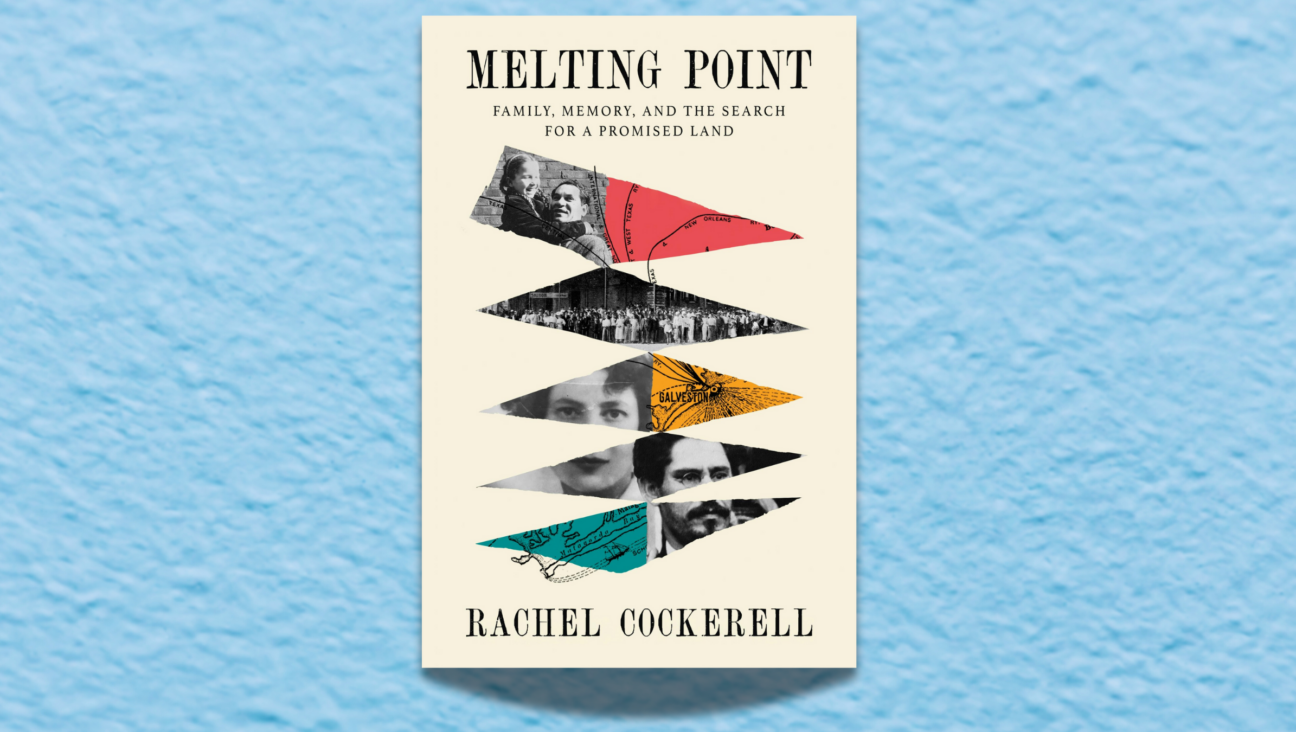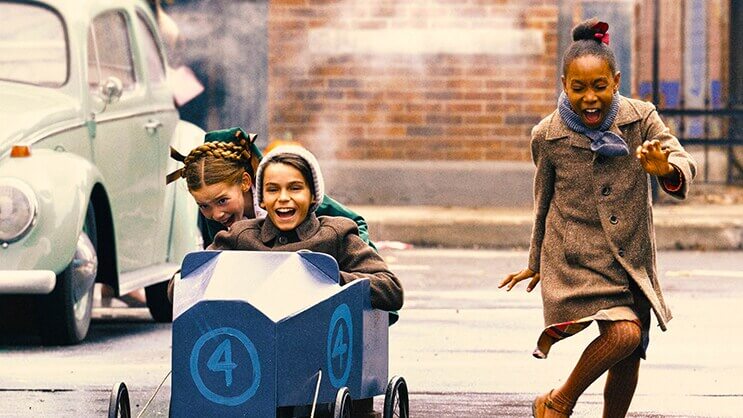Language Arts, or Lack Thereof

LAUREATE: Kertész, who won the Nobel Prize in 2002, has just released two shorter fictions, both of which transplant the American procedural genre to an Eastern European milieu.
Detective Story

LAUREATE: Kertész, who won the Nobel Prize in 2002, has just released two shorter fictions, both of which transplant the American procedural genre to an Eastern European milieu.
Translated from the Hungarian by Tim Wilkinson
Knopf, 112 pages, $21.
The Pathseeker
By Imre Kertész
Translated from the Hungarian by Tim Wilkinson
Melville House, 130 pages, $13.
Born in 1929 in Budapest, Imre Kertész completed his education at the universities of Auschwitz and Buchenwald before working as a journalist and translator from the German under the censors of communist Hungary. He began publishing his own fiction late, and was awarded the Nobel Prize in Literature in 2002.
These are the bones of Kertész’s case. Much remains unexamined.
Luckily, Kertész’s most important books have been evidenced into English: translations of “Fatelessness” (complemented by the film version by Lajos Koltai) and “Kaddish for an Unborn Child” were followed by the relative slightness of “Liquidation” and now two shorter fictions, “Detective Story” and “The Pathseeker.” Both take the detective genre and extenuate its organizational principles, transplanting the American procedural to an Eastern European milieu.
An uncharacteristically un-autobiographical fiction, “Detective Story” is set in a Hungary displaced, relocated to South America to avoid official rebuke and there amid the covert “Corps” security services of an unnamed regime. After a prefatory chapter penned by an attorney, “Detective Story” is turned over to prisoner and former detective Antonio Martens, who relates, in the most banal prose possible, the circumstances that led to his downfall following the investigation and assassinations of the Jewish Salinases, department-store magnate Federigo and his revolutionary son, Enrique. A “new boy” in the company of Diaz, the Corps’ psychological ringleader, and Rodriguez, a sadistic henchman, Martens had collaborated in surveillance, interrogation and torture, ensnaring the son in an espionage that incriminates the father and even himself: After both Salinases are killed on an incorrect or only imaginary pretext, Martens takes the fall for faulty detection and is condemned to die under the successor regime to that of the pitiless though mostly absent colonel. Awaiting his own firing squad, Martens has requested writing material in his cell. This novel is his written confession.
Behind the locked door of Martens’s classic comeuppance lurks Kertész’s titular “detective story,” a mystery — that of the nature of the Salinas’s “crime” — whose resolution reflects the best of the “Father Brown” stories of G.K. Chesterton, in a shocking concurrence of the ordinary and bold (Chesterton’s detecting Father Brown would famously propose a supernatural solution to an impossible crime, only to retract it and substitute an equally convincing explanation oppositely mundane, or logical). This gracile, grim novel is what Chesterton’s best reader, Jorge Luis Borges, would have written had he had the conviction to write about the South American dictatorships by which he was oppressed. But to reveal any more about the nature of Kertész’s denouement would be to detract from the boot in the gut that begins its kick on page 98.
‘The Pathseeker” is the less surprising but ultimately more impressive fiction. What it lacks in suspense it reparates in emotional acuity. An unnamed man, identified only by his profession of “commissioner,” arrives in a foreign country for “a specialist conference.” In an evening interview with Hermann, the only character named, the commissioner demands assistance in his “investigation,” which, we come to understand, has nothing to do with armchair reflections or commerce. Each motive limned, a cloud suffuses their conversation, and it’s not just the commissioner’s pipe smoke: “There was no denying that [Hermann] had heard about the case. He also knew that it had happened around there. It was painful, still painful, even to talk about it.”
The next morning, the commissioner and his wife embark on this, their final investigation, before taking a seaside vacation. They travel by bus through the provinces to a gatehouse beset by tourists. Later, a veiled woman disturbs lunch at a grand hotel. At an outdoor café, the commissioner hallucinates a hellish rush-hour scene out of Dürer, cinematically starring a young woman holding a cone of ice cream against the unbearable heat.
The next day, the commissioner ventures alone to “a more distant district,” which is the first locus he ever names: “Z.” Alert for further clues to a mystery not yet defined, the crime scene is revealed to the reader bound not by tape but by grasses and wire: The commissioner asks a young woman, “apple-cheeked and with ash-blond hair under her railway cap,” how to get to a factory he calls “Brabag.” As if in the babble of the newly born, she replies: “‘Hewt-ee-rah-vay-er-ke, Hutyra Werke.’”
“Finally,” Kertész narrates, “in a flash of understanding that he had already given up as forlorn, it turned out, all at once, that they had both been talking about the same thing in respect of the signified object; it was just their respective conceptions of it that differed, which is when he learned that he was in for a further spell of rail travel.” Brabag, an acronym for Die Braunkohle-Benzin AG, or the Brown Coal Gasoline Company, which was a slave labor outfit that refined lignite for the Third Reich, is now, apparently, known as the privatized Hutyra Werke. It follows that the commissioner, Kertész’s assumed identity, is a survivor of camps both concentration and labor, here to inspect the sites of his former incarceration, themselves lately hiding under false names. The gatehouse of his previous excursion featured the motto Jedem das Seine, or “To each his own,” and allusions have been made throughout to the works of Goethe, who wrote memorably about his infamous Buchenwald. The town from which the buses depart, and that gives the commissioner his image of the Inferno, is nowhere but nearby Weimar.
Intertextual references perk the settings’ dull abstraction: Hermann is perhaps the metaphorical suitor of that ice-cream-slurping Dorothea, reclaimed from Goethe’s poem “Hermann und Dorothea.” That consummate love story edifies, when compared to “Iphigenia in Taurus,” Goethe’s rewrite of Euripides, whose tragedy is recounted here. The commissioner’s wife leafs through an antique copy at a Weimar bookshop; the commissioner’s verdict: “‘Cheating and lies set in blank verse.’”
Most tellingly, “The Pathseeker” invokes “The Pathfinder” of James Fenimore Cooper, casting the commissioner cum Natty Bumppo as not the Last of the Mohicans but the Last of the Shoah’s Survivors: Just as Natty had one leather-stockinged moccasin in the world of the indigenous Indian and the other in the world of the settler or usurping white, the commissioner’s identity is European only if he’s not a Jew, or martyr. Both Cooper’s Bumppo and Kertész’s commissioner have set out — one through the American wilds, the other through the redressed borders of Europe — to solve the most essential and insoluble of mysteries: that of the self that not only survives but also triumphs.
I would like to say two words about the business and translation of books. One: Knopf — the American publishing house that has published more Nobel Prize-winner works than any other — has published “Detective Story” and is marketing it as a novel. And, Melville House — a small press based in Brooklyn — has published “The Pathseeker” as the debut of a series called “The Contemporary Art of the Novella.” It should be noted that in this instance, the novella is longer and more complex than the novel, which has been called what it’s not if only to help with its sales. Such are the hopes of multinational publishing. That Kertész has chosen to publish independently is laudable; Knopf was unwilling for reasons that were undoubtedly economic, or foolish.
The second word is about Kertész’s translators, and about the detectivist subplot that comprises any covert passage between languages, especially between those as foreign as Hungarian and English.
Kertész’s early novels exist in two English translations: Tim Wilkinson, a British expatriate in Budapest and translator of both fictions under review, retranslated two books for Knopf that had earlier been translated by Christopher C. Wilson and Katharina M. Wilson and published by Northwestern University Press in the days before the author’s laureate and fame. Kertész himself is said to approve of Wilkinson’s translations, or at least to disapprove of the Wilsons’, telling The Journal News: “I really tried to protest against the first translations, but I found complete rejection. The publisher was not willing to do new translations. It was a really bad feeling. It was as if you had a very sane character who has a rendezvous with the reader and the person who shows up is basically a real jerk, with a stammer, bad breath and a foul mouth.”
Ladies and gentlemen of the jury of those of us who care about translation — this is a case of an author having to be saved from himself, or from his enthusiasm at being retranslated, at interest being breathed anew into his work. “Fateless” by the Wilsons is every word as effective as Wilkinson’s “Fatelessness,” and “Kaddish” I would reread in the Northwestern translation (titled “Kaddish for a Child Not Born”), which called upon the example of Austrian writer Thomas Bernhard — an unavoidable influence, whom Kertész has translated — without burying the text in received style or homage.
While the Wilsons are guilty of egregious sins of omission, they served their Muir roles with selflessness (husband and wife Edwin and Willa Muir being the first, though flawed, translators of Kafka), having Englished an uncompromising writer of inaccessible Europe relatively early and well. As for Wilkinson, one does not know what poetry Kertész reads into his prose. If Wilkinson is a good translator, he’s a middling writer. He knows Hungarian, he must, but he hasn’t much art in his native English, which is paramount for a prose as spare as Kertész’s, in which every word, every comma, counts.
I will introduce a few “exhibits”:
In “Detective Story” he translates in the voice of Enrique: “It’s not been possible to talk to the guys since the university was closed on account of the ructions.”
With “ructions,” which I understand to be British by way of “ruckus,” Wilkinson must mean what American faculties call “unrest,” or “riots,” even the fascist “actions.”
Later, the Nazi-loving Rodriguez is apparently unafraid to exercise his Yiddish, as Wilkinson has him saying, “You are familiar with the spiel, and I am loath to repeat it.’”
These small un-subtleties, in such a small novel, accrue. But Wilkinson’s lack of syntactical tact is the worst: “The Colonel did indeed later have cause to regret that we made news of Salinas’ execution public; without a doubt it triggered a big moral backlash, far too big, and all quite unnecessarily.”
Defenders of Wilkinson might attribute the clumsy prose of “Detective Story” to the tale’s clumsy narrator, a low-life, low-level know-nothing. I, for one, will not enter into that unwinnable argument, preferring to be trapped in a dark alley with “a big moral backlash” instead.
“The Pathseeker” is altogether more polished if wordy and overly formal, its clauses occasionally meandering their sentences down paths shadowy, or incoherent:
“He turned irritably away to the window; if they were going to go on like this, the wife’s quiet activity would chip away at even what meager success he had achieved in the town: her presence was placing limits on everything, constraining everything into a channel of intolerable moderation — thus the product of his mistake, the fruit of his rashness, for the sweetness of which he was already having to pay.”
A writer of Kertész’s talent deserves better translations, and better readers who would demand such for him. Unfortunately, the Kertész case seems to have been largely passed over, under-edited, un-judged (and not for lack of other options: Imre Goldstein, Ivan Sanders and Judith Sollosy, Hungarian translators and immigrants to English all, have written more artistically). “Detective Story” is scarily spare, and “The Pathseeker” a harrowing near-masterwork, but each work could have been more: In Wilkinsonian metaphorical malaprop, Kertész’s novellas are razor-sharp indictments that, in these translations, lack teeth.
Joshua Cohen is a literary critic for the Forward.
The Forward is free to read, but it isn’t free to produce

I hope you appreciated this article. Before you go, I’d like to ask you to please support the Forward.
Now more than ever, American Jews need independent news they can trust, with reporting driven by truth, not ideology. We serve you, not any ideological agenda.
At a time when other newsrooms are closing or cutting back, the Forward has removed its paywall and invested additional resources to report on the ground from Israel and around the U.S. on the impact of the war, rising antisemitism and polarized discourse.
This is a great time to support independent Jewish journalism you rely on. Make a Passover gift today!
— Rachel Fishman Feddersen, Publisher and CEO
Most Popular
- 1

News Student protesters being deported are not ‘martyrs and heroes,’ says former antisemitism envoy
- 2

News Who is Alan Garber, the Jewish Harvard president who stood up to Trump over antisemitism?
- 3

Fast Forward Suspected arsonist intended to beat Gov. Josh Shapiro with a sledgehammer, investigators say
- 4

Politics Meet America’s potential first Jewish second family: Josh Shapiro, Lori, and their 4 kids
In Case You Missed It
-

Opinion Why can Harvard stand up to Trump? Because it didn’t give in to pro-Palestinian student protests
-

Culture How an Israeli dance company shaped a Catholic school boy’s life
-

Fast Forward Brooklyn event with Itamar Ben-Gvir cancelled days before Israeli far-right minister’s US trip
-

Culture How Abraham Lincoln in a kippah wound up making a $250,000 deal on ‘Shark Tank’
-
Shop the Forward Store
100% of profits support our journalism
Republish This Story
Please read before republishing
We’re happy to make this story available to republish for free, unless it originated with JTA, Haaretz or another publication (as indicated on the article) and as long as you follow our guidelines.
You must comply with the following:
- Credit the Forward
- Retain our pixel
- Preserve our canonical link in Google search
- Add a noindex tag in Google search
See our full guidelines for more information, and this guide for detail about canonical URLs.
To republish, copy the HTML by clicking on the yellow button to the right; it includes our tracking pixel, all paragraph styles and hyperlinks, the author byline and credit to the Forward. It does not include images; to avoid copyright violations, you must add them manually, following our guidelines. Please email us at [email protected], subject line “republish,” with any questions or to let us know what stories you’re picking up.











